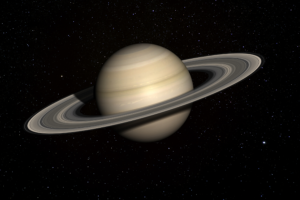How Far Can You See With A Telescope On Land?
Disclosure: This post contains affiliate links and I may earn a small commission (at no extra cost to you) if you click through and make a purchase. Thanks in advance – I really appreciate it!
Are you a keen observer of boats, rivers, wildlife, architecture, or you simply just want to see people in your surroundings up close?
Before buying my first telescope I always wondered how far and how clearly can I see things on land using the same telescope.
Key Takeaways:
So, how far can you see with a telescope on land?
The Earth’s horizon which is about 4.7 km away is the farthest point an observer can see with a telescope on land. The distance an observer can see depends on factors such as objects in the line of sight, atmospheric refraction, the height of the point of observation, and Earth’s natural curvature.
How far you can see with a telescope also depends on a few other atmospheric and physical factors. Read on to find out.
How Far Can You See On Land With A Telescope
Assuming no atmospheric refraction and a spherical Earth with a radius of 6,371 kilometers, an observer looking through a telescope who is 5 feet 7 inches tall, standing on the flat ground can see up to the horizon which is at a distance of 4.7 kilometers (2.9 mi).
Note that we are also assuming here that there are no trees, mountains, or buildings that can block the observer’s line of sight to the horizon.
Geometry tells us that the distance of the horizon – i.e. the farthest point the eye can see before Earth curves out beneath our view – depends simply on the height of the observer. For example, if you stood atop Mount Everest (which is 29,029 feet, or 8,848 meters tall), the horizon would be about 370 km (230 miles) away.
The Earth’s horizon’s distance from the observer varies from day to day due to atmospheric refraction, which is greatly affected by weather conditions.
Also, as we already discussed, the higher the observer’s eyes are from sea level, the farther away the horizon is from the observer.
For instance, in standard atmospheric conditions, for an observer 5 feet 7 inches tall, looking through a telescope, the horizon is at a distance of about 5 kilometers (3.1 mi).
When observed from very high standpoints, such as a tall building, a mountain, or a space station, the horizon is much farther away and it encompasses a much larger area of Earth’s surface.
You have to be standing higher than sea level and/or your target must be higher than sea level to be able to see farther than 4.7 km.
Here is a formula to determine how far the horizon is, based on the observer’s height above sea level.
Ignoring the effect of atmospheric refraction, distance to the true horizon from an observer close to the Earth’s surface is about:
d = sqrt(2*h*R)
where h is your height above sea level and R is the Earth radius (6,371 kilometers) & d is the distance to the horizon.
When d is measured in kilometers and h in meters, the distance is
d = 3.57 * sqrt(h)
where the constant 3.57 has units of km/m½.

Related: Best Backyard Telescope; Reviews
Effects Of Atmospheric Refraction On How Far You Can See With A Telescope
Due to atmospheric refraction, the distance to the visible far-off objects is further than the distance based on a simple geometric calculation.
If the ground (or water) surface is colder than the air above it, a cold, dense layer of air forms close to the surface, causing light to be refracted downward as it travels, and therefore, to some extent, to go around the curvature of the Earth.
The reverse happens if the ground is hotter than the air above it, as often happens in deserts, producing mirages.
Earth has an atmosphere of air, whose density and refractive index vary considerably depending on the temperature and pressure.
This makes the air refract light to varying extents, affecting the appearance of the distant objects that you are trying to see through a telescope.
Usually, the density of the air just above the surface of the Earth is greater than its density at greater altitudes.
This makes its refractive index greater near the surface than at higher altitudes, which causes light that is traveling roughly horizontally to be refracted downward.
This makes the actual distance to the distant objects greater than the distance you may calculate using the geometric formulas.
Related: Best Telescope For Beginners; Reviews
Effect Of Size Of The Objects On How Far You Can See With A Telescope
The size of the target is intuitively obvious, as in the case of a city with a few large buildings, we can see the city’s skyline from way further away than 4.7 km.
In fact, if the city has huge skyscrapers, the city’s skyline can be seen at least 50 km away since the height of the city’s buildings allow them to “peak” above the Earth’s horizon, allowing them for a fairly significant increase in sightline length.
The taller the target, the further behind the horizon it can be and still have its top visible.
Check out this awesome Google Earth video showing what it’s like to travel the longest sightline on earth at 32 times the speed of sound. The total distance of 443 km, from Pic de Finestrelles in the Spanish Pyrenees to Pic Gaspard in the French Alps.
Related: Best Telescope Under $200; Reviews
Which Is The Best Type Of Telescope To See On Land
For terrestrial use, its best to avoid Newtonian reflectors. The eyepiece goes directly into the focuser, and you’ll get an inverted (upside down) image. It doesn’t matter if you are looking at celestial bodies, but inverted images are a pain for terrestrial use.
With other scope types – like refractors, Schmidt Cassegrain telescopes (SCTs), and Maksutov Cassegrain telescopes, you can use a diagonal mirror or prism between the focuser and the eyepiece. This flips the image vertically, so you end up with an image that’s the right way up.
Here are a few good telescopes that can be used to see on land.
Celestron – 70mm Travel Scope
Celestron Travel Scope Is a good grab-n-go refractor telescope for beginners as it is equipped with two high-quality eyepieces (20mm and 10mm) that provide low- and high-power views of celestial objects at night and terrestrial objects during the day.
This Celestron telescope and full-height tripod can be taken anywhere in the included travel backpack.
- Superior optics: The Celestron 70mm Travel Scope features high-quality, fully-coated glass optics, a potent 70mm objective lens, a lightweight frame, and a custom backpack to carry it all. Its quality is unmatched in its class and against competitors.
- Powerful eyepieces for up-close viewing: Our telescope for astronomy beginners is equipped with two high-quality eyepieces (20mm and 10mm) that provide low- and high-power views of celestial objects at night and terrestrial objects during the day.
Prices pulled from the Amazon Product Advertising API on:
Product prices and availability are accurate as of the date/time indicated and are subject to change. Any price and availability information displayed on [relevant Amazon Site(s), as applicable] at the time of purchase will apply to the purchase of this product.
Celestron 52322 Landscout
The angled-viewing LandScout 12-36×60 Spotting Scope from Celestron is a lightweight entry-level zoom optic designed to be easy on the budget and easy to transport.
This LandScout spotting scope has a built-in 12-36x eyepiece and includes a tabletop tripod, providing the observer with a system that is ready to start glassing right out of the box.
A 60mm objective lens and fully coated optics transmit adequate brightness and detail to handle a range of tasks, including nature observation and spotting at the rifle range.
- Fully Coated Optics: Increased light transmission for bright, sharp images
- Compact, Lightweight: Portable and packable, so you can take it on any excursion out in the field or on the range
- Rotating tripod mount: Place the orientation of the eyepiece in the best viewing position for application
- 12-36x Zoom Eyepiece: Adjustable magnification - wide field of view for general viewing or detailed up-close viewing when needed. Rubber grip for easy magnification adjustment
Prices pulled from the Amazon Product Advertising API on:
Product prices and availability are accurate as of the date/time indicated and are subject to change. Any price and availability information displayed on [relevant Amazon Site(s), as applicable] at the time of purchase will apply to the purchase of this product.
Orion GoScope III 70mm Refractor
Orion GoScope III is a perfect Grab-and-go day and night refractor telescope and lightweight aluminum tripod for beginning stargazers and families on the go.
The whole family can still enjoy sharp daytime terrestrial views and night sky observations while on the road, and save storage space in the car by bringing along the portable Orion GoScope III. It’s a versatile 70mm-aperture refractor telescope designed to pack up and go whenever you hit the road, the trail, or even the air.
- Grab-and-go day and night refractor telescope and lightweight aluminum tripod for beginning stargazers and families on the go
- Rugged, specially designed backpack holds the 70mm telescope, tripod and all accessories
- 400mm focal length telescope (f/5.7) excels at daytime birding use as well as viewing wildlife, scenery and casual nighttime observing of the Moon and bright planets
Prices pulled from the Amazon Product Advertising API on:
Product prices and availability are accurate as of the date/time indicated and are subject to change. Any price and availability information displayed on [relevant Amazon Site(s), as applicable] at the time of purchase will apply to the purchase of this product.
Written by:

Kavya Joshi
My love affair with space began in a field in India at the age of 7, when I looked up at the Milky Way for the first time. Ever since, I have been attempting to cram in every fact about the Universe, I can find into my head.
ABOUT US
We are a team of active amateur astronomers, here to help you with all your astronomy and science related needs – this is anything, from reviewing the latest telescopes to be released to talking about gravity and neurons. The Big Bang Optics was started because of our love for astronomy and to help others like us find the best telescope and accessories.
LEGAL DISCLAIMER
The Big Bang Optics is a participant in the Amazon Services LLC Associates Program, an affiliate advertising program designed to provide a means for sites to earn advertising fees by advertising and linking to Amazon.com. The Big Bang Optics also participates in affiliate programs with Clickbank and other sites. The Big Bang Optics is compensated for referring traffic and business to these companies.







